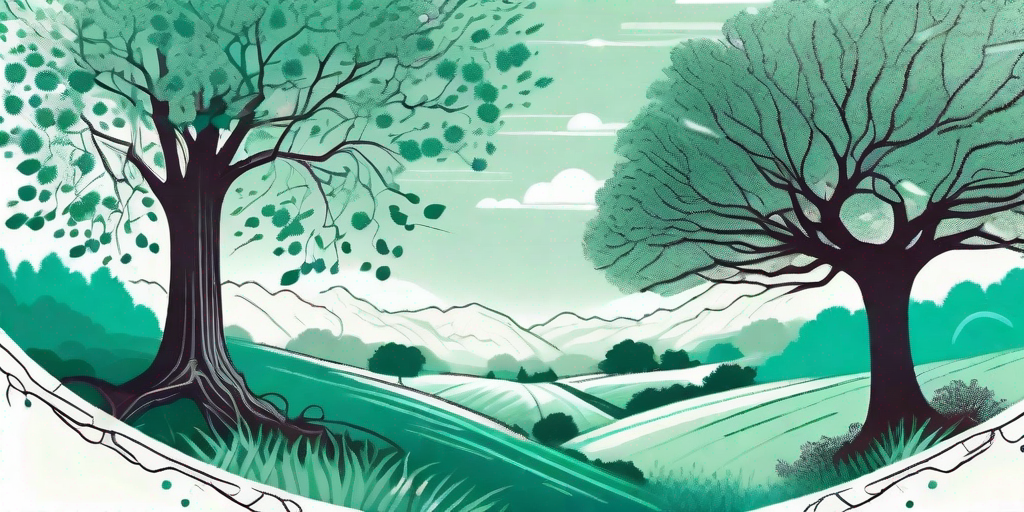
The English Hawthorn, or Crataegus monogyna if you're feeling fancy, is a species of hawthorn native to Europe, northwest Africa, and western Asia. It's a plant that's as versatile as it is beautiful, and it's about time we gave it the spotlight it deserves. So, buckle up, plant enthusiasts, because we're about to embark on a botanical journey of epic proportions.
The English Hawthorn: A Botanical Overview
First things first, let's get to know our star a bit better. The English Hawthorn is a deciduous shrub or small tree that can grow up to 15 meters tall. It's a hardy little thing, able to withstand harsh weather conditions and poor soil. But don't let its rugged exterior fool you, this plant knows how to put on a show.
Every spring, the English Hawthorn bursts into a spectacle of white or pink flowers, filling the air with a sweet, heady fragrance. Come autumn, it trades its floral attire for a vibrant display of red berries, known as haws. These berries not only add a pop of colour to the landscape, but they also serve as a vital food source for birds and other wildlife.
Fun Fact
Did you know that the English Hawthorn is also known as the May-tree, due to its flowering period? It's the only UK plant named after the month in which it blooms. So, next time you're struggling with a trivia question about UK flora, remember this little nugget of information.
Planting and Caring for Your English Hawthorn
Now that we're acquainted with the English Hawthorn, let's delve into the nitty-gritty of planting and caring for this botanical gem. Don't worry, it's not as daunting as it sounds. In fact, with a bit of patience and a green thumb (or even a slightly off-green thumb), you'll have your Hawthorn thriving in no time.
Firstly, you'll want to choose a spot that gets plenty of sun. While the Hawthorn can tolerate partial shade, it truly thrives in full sunlight. As for the soil, this plant isn't picky. It can grow in a range of soil types, from clay to sandy, as long as the soil is well-drained.
Planting Steps
- Dig a hole twice as wide and just as deep as the root ball.
- Place the plant in the hole, making sure the top of the root ball is level with the soil surface.
- Backfill the hole with soil, firming it gently around the base of the plant.
- Water thoroughly.
Once your Hawthorn is in the ground, it's all about maintenance. Regular watering, especially during dry spells, will keep your plant happy. Pruning, while not necessary for the health of the plant, can help maintain its shape and size.
The English Hawthorn in Folklore
Our journey wouldn't be complete without a detour into the realm of folklore. The English Hawthorn has a rich history, steeped in myth and magic. It's been a symbol of love and fertility, and it's even believed to have protective properties.
In Celtic mythology, the Hawthorn is associated with the faerie realm. It's considered bad luck to cut down a Hawthorn tree, as it could anger the faeries. So, if you're planning on adding a Hawthorn to your garden, you might want to consider getting some faerie insurance. Just kidding! But really, who wants to risk the wrath of the faeries?
FAQs
- Is the English Hawthorn poisonous?
While the berries of the English Hawthorn are not poisonous and are in fact used in a variety of culinary applications, the leaves and flowers can be toxic if consumed in large quantities. So, it's best to stick to admiring its beauty and leave the tasting to the birds.
- Can I grow an English Hawthorn from a cutting?
Yes, you can propagate an English Hawthorn from a cutting. However, it's a bit more challenging than growing from seed. The best time to take a cutting is in late summer or early autumn.
- How fast does an English Hawthorn grow?
The English Hawthorn is a slow-growing plant. It typically grows about 30 cm per year. So, if you're looking for instant gratification, this might not be the plant for you. But trust us, the wait is worth it.
And there you have it, a comprehensive guide to the enchanting world of the English Hawthorn. Whether you're a seasoned gardener or a budding plant enthusiast, we hope this article has inspired you to add this blooming beauty to your green space. After all, who could resist a plant that offers year-round interest, is easy to care for, and might just keep the faeries at bay?















